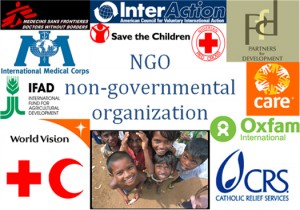Written by on in Development Policy Blog
So what’s all the fuss about?
Banks and Hulme’s key argument is that NGOs have increasingly become donor-dependent, donor-driven, service providing entities. In the process, they have moved away from their foundations as grassroots-connected, participatory, bottom-up, political entities that aim to achieve empowerment and transform the structural causes of poverty.
Banks and Hulme contend that if NGOs want to remain part of a broader civil society focussed on transforming power relations between citizens, markets and the State, they need to reorientate “in line with their original strengths and vision, putting communities and the grassroots back at the centre of strategies and participatory approaches back at the centre of activities”.
Green’s response is that the paper generalised NGOs, that no NGOs had been interviewed during the writing or review process, and that there were no case studies to support some of the arguments being made. Green encourages the authors to engage with the internal and published work on NGOs’ efforts to address effectiveness and accountability issues. I have sympathy with Green’s criticisms and they weren’t incorrect. But they don’t deflate the overarching critique.
While NGOs have, and do, try to respond to past apprehensions regarding their work, overall it is not clear that this has led to real-world change. Thirteen years ago Michael Edwards’ wrote an analysis of NGOs similar to the Banks and Hulme paper (but more specifically focussed on international NGOs). The fact that comparable arguments are being repeated today reinforces the concern that NGOs are not translating their internal reflections into change on the ground.
One of the reasons I appreciated the Banks and Hulme paper was because it reflects my observations while working and travelling in the Pacific. The activities of an NGO in a particular village I visited struck me as illustrative. At the community hall there was a blackboard with remnants of a workshop to establish a community crime prevention committee. The smudged chalk articulated who the ‘youth rep’ was, the ‘women’s rep’, the ‘community leader’ and the ‘church leader’: a one-size-fits-all approach to participation. Later I asked around about crime in the village. “We have a few drunken youths but not too much else”, came the reply. For certain this was not the end of the story on crime, but what people regularly apologised for and complained about during my stay was the lack of water. Communal taps regularly ran dry and only the lucky few with tanks could collect rain water for drinking. Where this community was ‘at’ was thirsty, not beseiged by criminality. Was the crime prevention committee really top-of-the-list for this village, and even if it was, was the establishment of a committee the best way for them to manage it?
I’m generalising here too but it is necessary to make a point (in 1000 words). Banks and Hulme, Edwards, and many others, have a valid critique and it is up to NGOs to respond to it through constructive action.
Having said that, what Banks and Hulme don’t articulate nearly enough is how complex the situation is for many NGOs (particularly international and/or large organisations). They have multiple stakeholders and audiences that require different approaches and pull them in different directions: engaging with communities in poor countries; seeking funding from and influence with donors; marketing to citizens in their own country; and sometimes (though rarely) undertaking development education with domestic citizens. Then there are board members and staff to consider as well.
In trying to stay true to their values and vision while juggling this diverse ownership, something has to give. What appears to have given most is an enacted commitment to grassroots connections, and working toward poor people’s empowerment through meaningful participation and global citizenship. What has gained is the drive for organisational sustainability and growth, linked with service-provision projects, technocratic advocacy, and the accompanying accountability and credibility-proving to donors.
Perhaps there are some NGOs that manage these tensions and balance them all equally well: if so, please share! But if not, hard choices need to be made. And there is no doubt that even harder than the choices will be putting them into practise.
While there are various possible choices to be made, I suspect that many NGOs would decide to remain focussed on their commitment to grassroots empowerment and to transforming poverty’s structural causes. Putting this into action will require sustained internal political will for self-analysis and action. While the task seems monumental, small first steps may be possible: inviting critical membership onto governing bodies; undertaking peer reviews based on measures of empowerment; investing in improved accountability to the communities we work with. Starting small, testing the results, engaging with academics to assist, and sharing the results, may begin the long road to transforming NGOs.
Finally, a word for donors – government, philanthropic or private citizen – who claim they want to see a world without poverty. There is an ever-decreasing space for investing in flexible, adaptable and risky activities. Yet, if the deep causes of poverty are to be transformed, funding these activities could provide opportunities. This involves building trusting relationships over time with limited opportunities to articulate the potential outcomes in advance. Given today’s demand for measurable results and fear of failure, it is not only NGOs that have some hard thinking to do.
Joanna Spratt is a consultant and coordinator of NZ Aid and Development Dialogues (NZADDs), with a background in nursing and international development.
